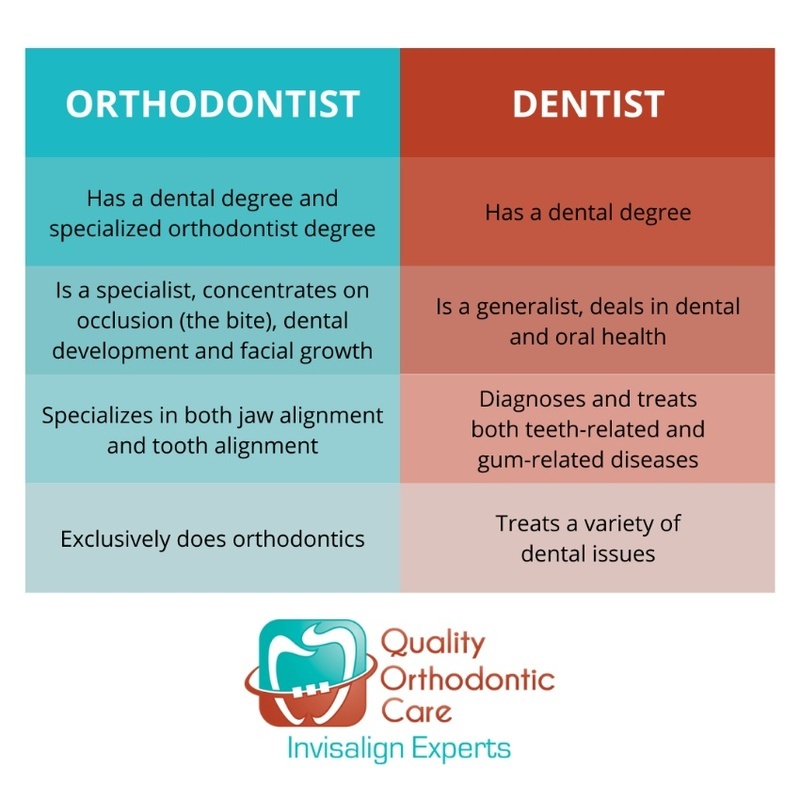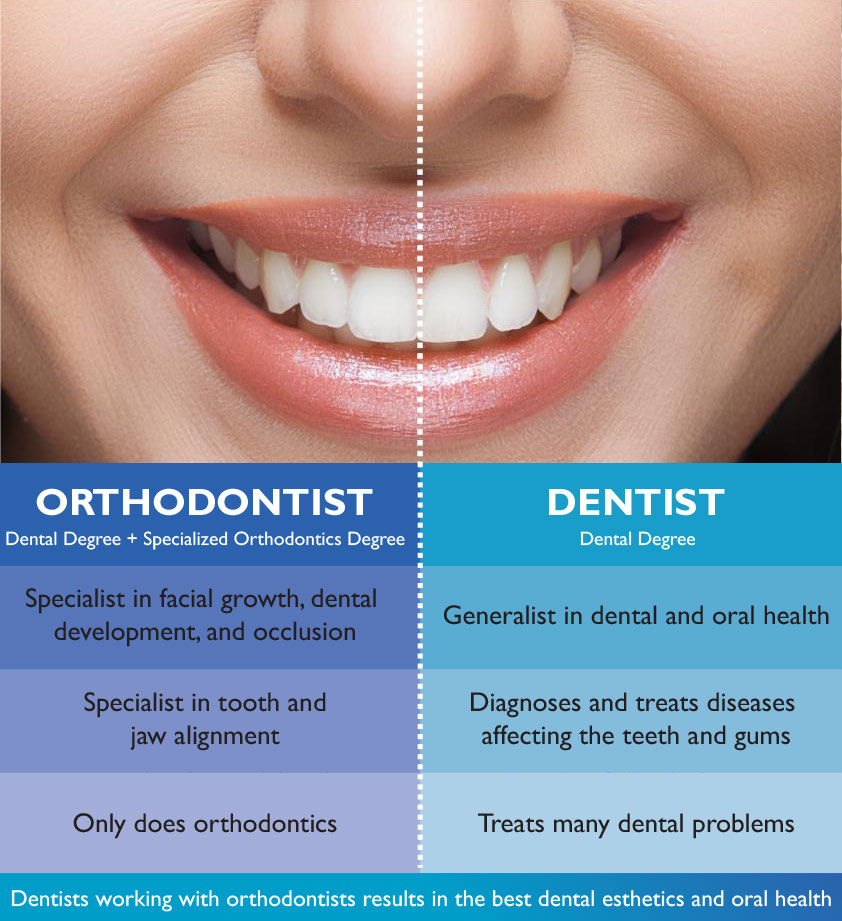Causey Orthodontics for Dummies
Table of ContentsThe Definitive Guide to Causey OrthodonticsGetting My Causey Orthodontics To WorkCausey Orthodontics Can Be Fun For AnyoneExcitement About Causey OrthodonticsGetting My Causey Orthodontics To WorkFascination About Causey OrthodonticsNot known Details About Causey Orthodontics
What is the difference between a dentist and an orthodontist? All dental experts, consisting of orthodontists, deal with the teeth, periodontals, jaw and nerves.
Orthodontists and dental professionals both supply dental look after patients. Orthodontists can operate in an oral office and provide the very same treatments as various other dental practitioners. You can think of both physicians that deal with gum and teeth issues. The main difference is that becoming an orthodontist requires a specific specialized in treating the imbalance of the teeth and jaw.
Indicators on Causey Orthodontics You Should Know
An orthodontist is a dental expert that has actually gone through training to specialize in the medical diagnosis, avoidance and treatment of irregularities in the jaw and teeth. They can additionally determine prospective issues in teeth placement that may develop when problems are left without treatment (Causey Orthodontics).
This includes all the necessary education to become a general dental expert. According to the American Pupil Dental Association (ASDA), it suggests you will need to have either a Doctor of Medicine in Dentistry (DMD) or a Doctor of Oral Surgery (DDS). In other words, orthodontists need to complete oral school and after that acquire an orthodontics specialty education and learning.
Some orthodontists also obtain their masters in craniofacial biology. These programs concentrate on two specific areas or techniques: Dentofacial Orthopedics: This research concentrates on leading teeth and jaw growth.
The 15-Second Trick For Causey Orthodontics

 These consist of apparatus such as dental braces, retainers and Invisalign. So, what does an orthodontist do, and what do they concentrate on? The total objective of an orthodontist is to boost a patient's bite. Not everyone is birthed with straight teeth, and an orthodontist will guarantee that patients get uniformly spaced straight teeth.
These consist of apparatus such as dental braces, retainers and Invisalign. So, what does an orthodontist do, and what do they concentrate on? The total objective of an orthodontist is to boost a patient's bite. Not everyone is birthed with straight teeth, and an orthodontist will guarantee that patients get uniformly spaced straight teeth.
Our Causey Orthodontics Statements
The American Organization of Orthodontists advises your initial check up by age 7. You'll require to see your orthodontist if you have an imbalance in your teeth, likewise called malocclusion. Also, if you discover irregular bite patterns, a slightly twisted jaw, or when your teeth are overcrowded, you will likely require orthodontic treatment.
At Advanced Orthodontics, we provide people with a alternative therapy experience. Additionally, we provide flexible therapy routines, adaptable settlement alternatives and a fun, satisfying experience. Phone call ( 480) 357-4900 today to find out more and timetable a visit.
An orthodontist is a dental practitioner trained to diagnose, protect against, and treat teeth and jaw irregularities. Orthodontists function with people of all ages, from children to adults (https://www.bildhost.com/causeyortho7).
The smart Trick of Causey Orthodontics That Nobody is Talking About
Malocclusion, or misaligned teeth, can bring about dental problems, consisting of dental caries, periodontal condition, and difficult or agonizing eating. Not everyone is born with straight teeth. If you have a bad bite or big rooms between your teeth, you might intend to get in touch with a dental professional concentrating on orthodontic treatment.
(Photo Credit: DigitalVision/Getty Images) Orthodontists use dealt with and detachable oral tools, like braces, retainers, and bands, to transform the placement of teeth in your mouth. Orthodontic therapy is for oral problems, including: Misaligned teethBite issues, like an overbite or an underbiteCrowded teeth or teeth that are as well much apartJaw misalignmentThe objective of orthodontic therapy is to improve your bite.
The 15-Second Trick For Causey Orthodontics

, yet not all dental experts are orthodontists. They focus on two areas: Exactly how to effectively and safely relocate teeth Exactly how to properly guide development in the teeth, jaw, and faceOnce an orthodontist has completed training, they have the option to come to be board licensed.
Malocclusion leads to tooth overcrowding, an irregular jaw, or irregular bite patterns. Malocclusion is typically treated with: Your orthodontist affixes steel, ceramic, or plastic square bonds to your teeth.
What Does Causey Orthodontics Mean?
Some people require a headgear to aid move teeth into line with pressure from outside the mouth. A retainer is a personalized tool that keeps your teeth in place.